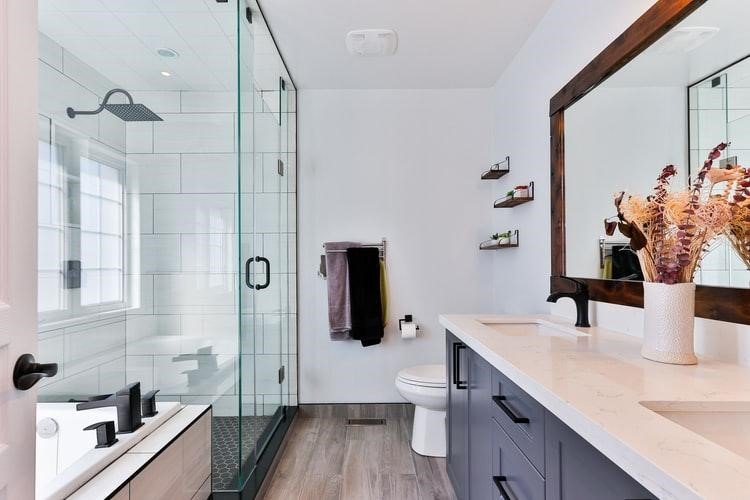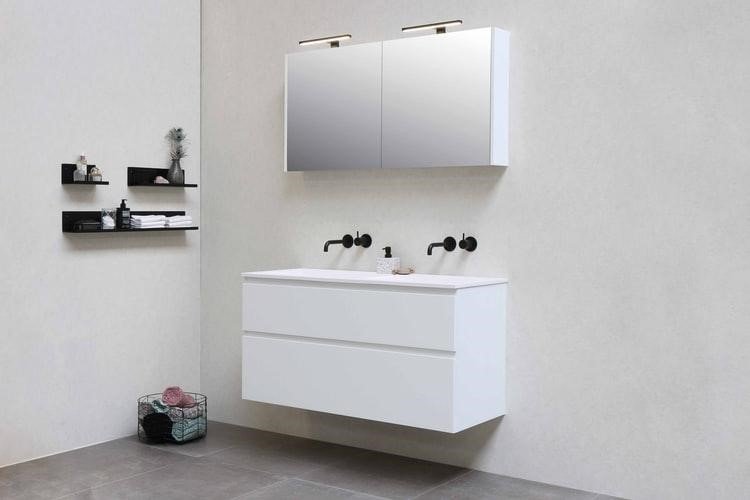Table of Contents Show
Renovating your bathroom is a great time to make some of the smaller plumbing updates that can really improve your life and the value of your home.
From replacing old fixtures and updating pipes to adding an additional sink, it’s important to consider the plumbing aspects of your project.
You don’t want to be in the middle of a renovation and realize that you need major changes made to accommodate your new bathroom layout.

So, before you start renovating your bathroom, here are a few plumbing-related changes you should consider making.
Some of these are more important than others, but all of them will impact the overall quality and efficiency of your finished project.
1. Replace Your Tank Toilet With a HET
When you are redesigning your bathroom, it is important to consider various aspects before you begin.
One of these decisions can be switching from a tank system toilet to a high-efficiency toilet (HET). Tank systems use about four gallons of water per flush, while HETs only need one gallon.
This saves on water usage and reduces your home expenses. In addition, HETs are more efficient because they use gravity to flush.
A tank system has a vacuum and a pump that works against gravity while the toilet is flushing. The pressure created by this causes water to come out of the faucet at high speeds, which can cause leaking from your bathroom sink if it is too old.
HETs are also quieter than tank systems and are more environmentally friendly than tank systems.
To properly install a high-efficiency toilet (HET), be sure to search for a “plumber near me” online who can recommend the best replacement option.
2. Replace Your Showerhead
If you’re trying to reduce the amount of water that goes into your septic system, consider installing a low-flow or high-efficiency showerhead.
These are often available as replacement parts at hardware stores and will help save on energy costs by reducing the flow rate from gallons per minute (GPM) down to less than two GPM.
Low-flow showerheads are good for conserving water which, of course, is a great thing if you live in an area with high water costs.
A bathroom renovation is not just about what you see, but what goes on under the surface. Replacing your showerhead will definitely make a difference in your water bill.
The new showerheads are becoming more affordable as well, which makes this an easy choice for you. Only buy top-name brands to ensure reliability, durability, and quality over time.
Read Also:
3. Add a Pressure Reducing Valve
A pressure-reducing valve is a fixture in the plumbing system which regulates the water supply to reduce peak flow.
This type of valve is typically installed near your hot water heater, but if you don’t have one of those, it can be installed anywhere on your main plumbing line.
The idea behind this is that when there’s excess demand for hot water, it will regulate what comes out, so you don’t get a huge amount of water coming at once.
That means that plumbing in your bathroom renovation will last longer because the pressure will be reduced if anything goes wrong with your hot water heater or another component on the supply line to it (like an old pipe).
It also makes things easier when taking showers because the water pressure is even. The installation process for a pressure-reducing valve will vary depending on what type of plumbing system you have, as well as where it’s being installed.
4. Install a Soaker Tub Faucet and/or Aerator in Your Sink for Better Water Flow
A soaker tub faucet will allow you to fill up a sink with water, turn on the valve and let it slowly flow out over time.
The design is reminiscent of an old-style bathtub that can be filled from below as opposed to above, as a standard sink.
This function may not seem important for some people, but if your sink is located in a room with high traffic, it can be very helpful to have.
The aerator on your sink’s faucet will help you save water while still enjoying the benefits of running water from the tap.
Aerators are available for both old and new fixtures, so if yours is an older model, you should consider upgrading it. These two upgrades will help you to save on water and reduce your overall costs.
5. Replace Old, Weak Pipes with Copper or PVC Piping
If your home’s pipes are old, corroded, and/or galvanized steel, they may need to be replaced. Galvanized steel is susceptible to rusting, which can lead to leaks that will eventually cause damage to other parts of the house.
If you’re going with copper piping in a new bathroom renovation project or replacing an older section of PVC piping, make sure to add a clean-out fitting.
A plumber will install copper or PVC piping and make any necessary connections with other plumbing fixtures.
They will also attach the clean-out fitting, which is a separate pipe that allows for easy access to drains and pipes.
The fittings are often set in place with special sleeves or gaskets designed specifically for copper piping. This is an important plumbing change that will save time and hassle in future projects.
Implement These Changes for a More Modern Bathroom
We believe these five plumbing changes are necessary to create a more modern and efficient bathroom.
Go ahead and scrap the old pedestal sink and upgrade it with a new one that has an overflow drain.
This will give your bathroom some much-needed style, plus make sure there’s no risk of any water spilling over the edge. Small changes like these can have a huge impact on your renovation project.










